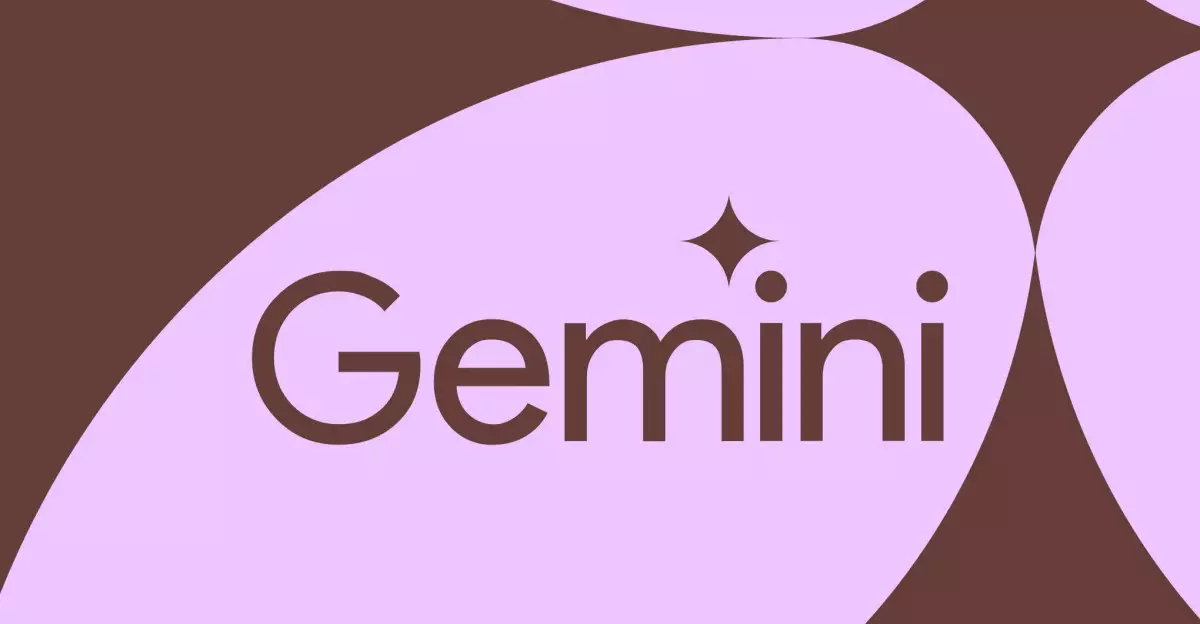Google’s recent upgrade to its Gemini-powered products marks a significant leap in making AI tools more accessible and versatile. The addition of audio file processing within the Gemini app is particularly transformative. For years, the absence of robust audio support limited the scope of AI engagement, especially for users relying on voice notes, podcasts, or recorded lectures. Now, with the capability to accept and analyze audio files up to three hours long for premium users, Google positions itself at the forefront of audio-visual integration in AI.
This enhancement is not merely a technical bump; it redefines how users can interact with AI technology. Imagine educators recording a lecture and receiving an instant, comprehensive summary or students uploading lengthy study sessions and obtaining tailored study guides. For creators and professionals, this means smoother workflows—transcribing audio, extracting key points, or even generating content from spoken words. The recognition of audio as the #1 user demand underscores Google’s commitment to user-centric development, aligning product growth with real-world needs.
While free users still enjoy a modest 10-minute audio limit, the move to increase capacity for premium users demonstrates a strategic approach—encouraging users to upgrade while addressing core needs. This shift hints at AI tools becoming more intertwined with everyday communication modes, potentially replacing traditional note-taking and transcription methods with smarter, more integrated solutions.
Breaking Language Barriers: Expanding Global Reach
Another pivotal aspect is Google Search’s expanded multilingual support. Incorporating five new languages—Hindi, Indonesian, Japanese, Korean, and Brazilian Portuguese—baves a broader global landscape for AI interaction. This move transmutes the platform from a primarily English-centric utility to a multilingual powerhouse capable of catering to diverse linguistic communities.
But the implications go beyond mere translation. Enabling complex question-answering in these new languages enriches the user experience, fostering deeper web exploration and smarter, culturally aware responses. It exemplifies Google’s recognition that language is not just a tool for communication but a vital bridge for knowledge access. The integration of Gemini 2.5 signifies an intelligent back-end upgrade, ensuring these language models are not only linguistically capable but also contextually nuanced.
This multilingual surge is crucial for democratizing AI access worldwide—particularly in regions where language barriers have historically limited technological integration. As the Internet becomes increasingly globalized, Google’s approach aligns with the broader vision of inclusive digital growth, empowering millions to leverage AI in their native tongues.
From Research to Custom Content: The Evolution of NotebookLM
Where Google’s advances truly shine is in the evolution of NotebookLM, transforming it from a basic research assistant into a versatile content creation platform. With new report styles in over 80 languages, users can produce tailored blog posts, study guides, quizzes, and flashcards based on their own uploaded documents and media.
The adaptability of this tool is striking. Users can manipulate the style and tone of their reports—whether they need a formal briefing, a casual blog, or an engaging quiz—delivering customized content at unprecedented speed. It’s a game-changer for educators, students, and content creators alike who need structured, diverse outputs without the headache of manual formatting or extensive editing.
Furthermore, the sophisticated use of AI in pattern recognition across various file formats signifies Google’s commitment to technical excellence. It’s no longer enough for AI to find simple data matches; it must understand context, nuance, and purpose. This pushes NotebookLM—and AI in general—closer to mimicking human-like comprehension, editing, and creativity.
Yet, the real innovation lies in the user empowerment aspect. The ability to choose personalized report structures, styles, and formats turns AI from a passive tool into an active partner—one that adapts to individual needs rather than forcing users to conform to its predefined outputs.
The Broader AI Strategy: Ambition Beyond Innovation
Google’s swift deployment of these features points to a more ambitious, holistic AI strategy—one that aims to integrate artificial intelligence deeply into daily life and work. In August and September, we saw features like automatic recall of user preferences, video generation capabilities, and enhanced photo editing tools—all marking an era where AI blends seamlessly with human creativity and productivity.
This aggressive rollout underscores a philosophy: AI should serve as an extension of human capabilities, seamlessly adapting to different contexts and media formats. Google’s focus on multilingual support, audio interaction, and customizable content creation reveals an understanding that accessibility, personalization, and versatility will define the future of intelligent tools.
However, this rapid escalation does raise questions about oversight, ethical considerations, and the potential for information overload. As these enhancements become standard, users must remain discerning of AI’s boundaries and limitations. While Google’s innovations are undeniably powerful, critical engagement is essential to prevent over-reliance or misuse.
Far from resting on its laurels, Google seems intent on shaping an AI ecosystem where language, media, and personalized content intersect fluidly. It’s a bold vision—one that, if managed responsibly, could profoundly transform how we learn, communicate, and create.


Leave a Reply